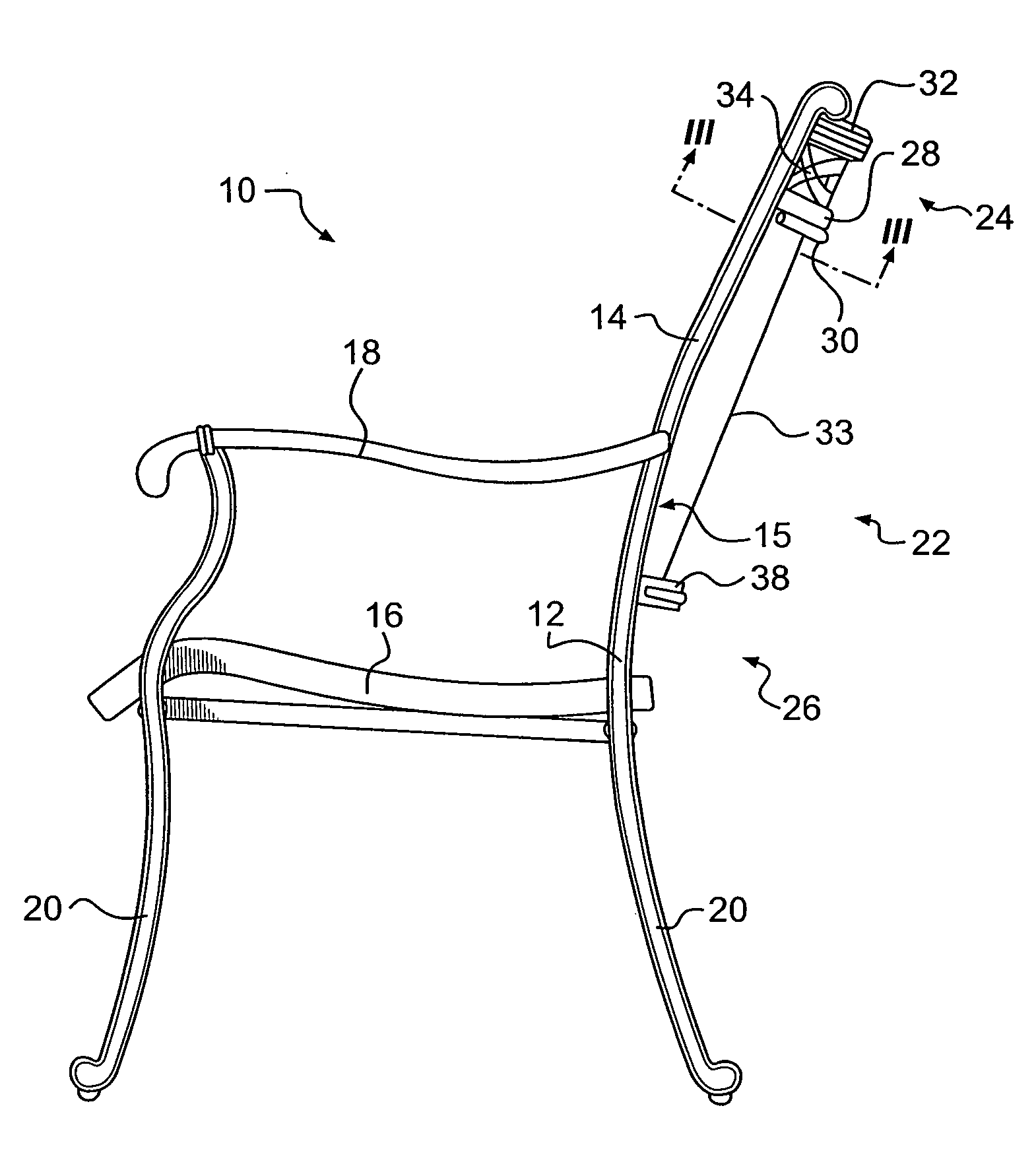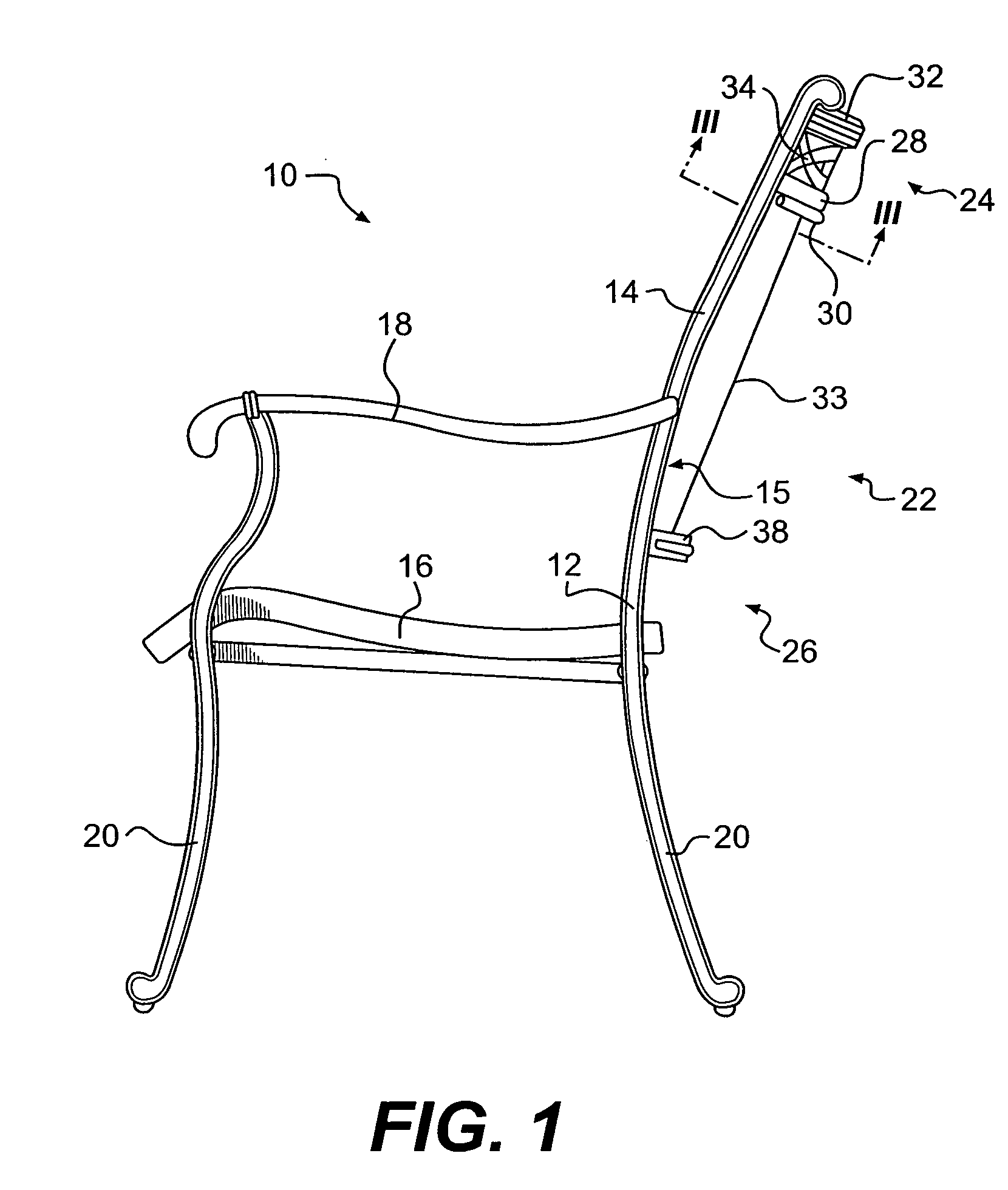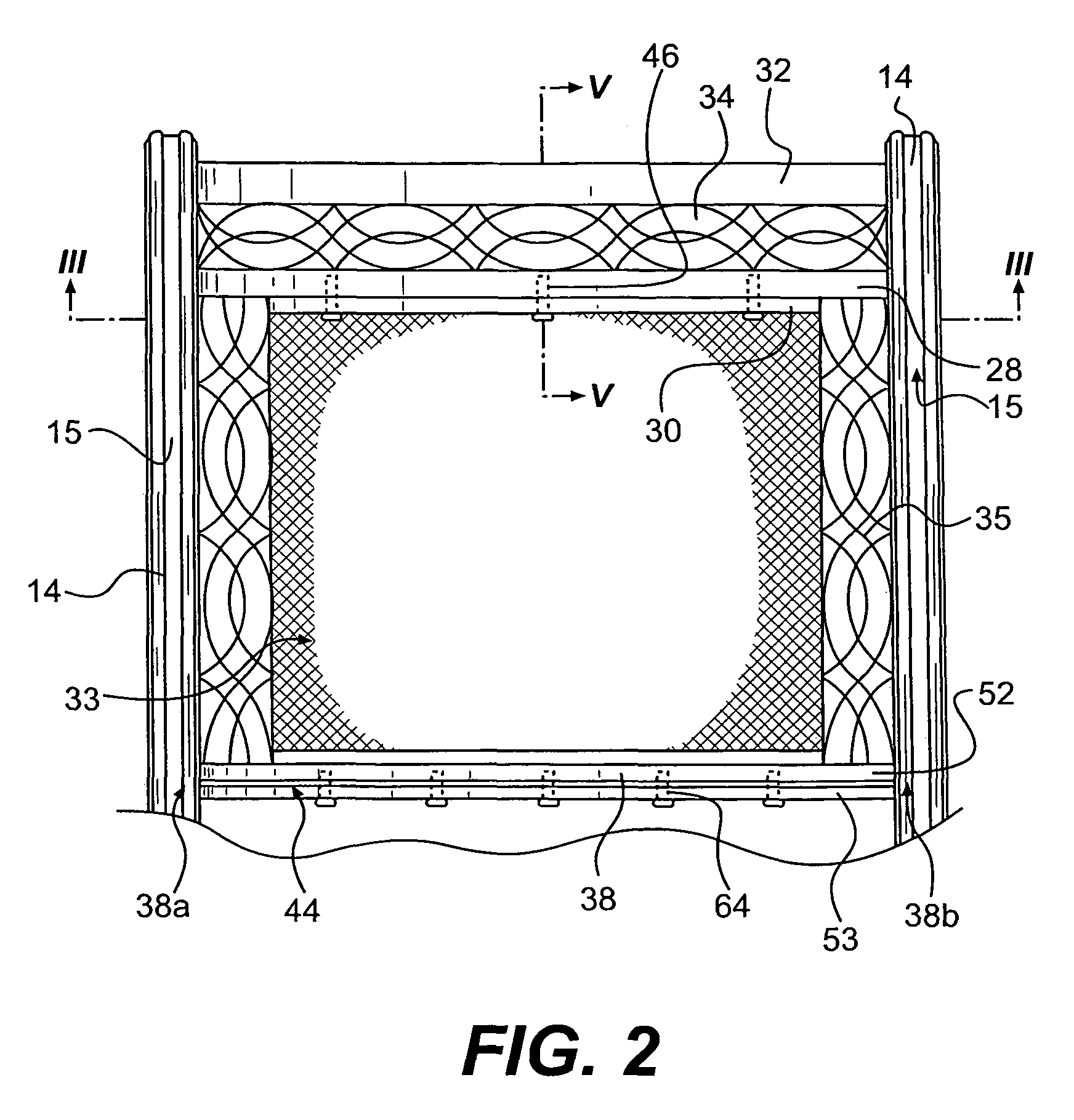Single frame sling chair
a single frame and backrest technology, applied in the field of single frame sling chair, can solve the problems of reducing the service life of the chair, so as to improve the service life, facilitate assembly, and facilitate the effect of assembly
- Summary
- Abstract
- Description
- Claims
- Application Information
AI Technical Summary
Benefits of technology
Problems solved by technology
Method used
Image
Examples
Embodiment Construction
[0020]As shown in FIGS. 1 through 10, the present invention provides a single frame sling chair 10, having a rigid frame 12. FIG. 1 shows an overall, right side view of one embodiment of a chair according to the present invention, including rigid frame 12 comprising frame side rails 14, seat 16, armrests 18 and leg portions 20. A backrest assembly 22 is also shown, including upper backrest assembly 24 and lower backrest assembly 26. Upper backrest assembly portion 24 includes top cross bar 28 and support bar 30 that may be detachable, described more completely hereafter. Top cross bar 28 may be integrally formed with top element 32 and connective fascia 34, or may be secured to top element 32 and connective fascia 34 as separate members. Top cross bar 28 is secured to an upper inner portion of the side rails, and acts as a spreader between the frame side rails 14. The bottom cross bar 38 is secured to a lower inner portion of the side rails, and acts in concert with the top cross ba...
PUM
| Property | Measurement | Unit |
|---|---|---|
| height | aaaaa | aaaaa |
| width | aaaaa | aaaaa |
| diameter | aaaaa | aaaaa |
Abstract
Description
Claims
Application Information
 Login to view more
Login to view more - R&D Engineer
- R&D Manager
- IP Professional
- Industry Leading Data Capabilities
- Powerful AI technology
- Patent DNA Extraction
Browse by: Latest US Patents, China's latest patents, Technical Efficacy Thesaurus, Application Domain, Technology Topic.
© 2024 PatSnap. All rights reserved.Legal|Privacy policy|Modern Slavery Act Transparency Statement|Sitemap



